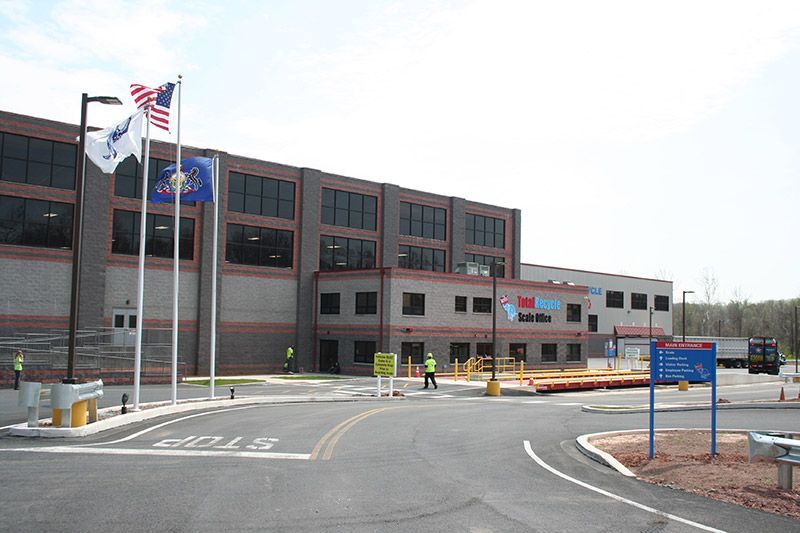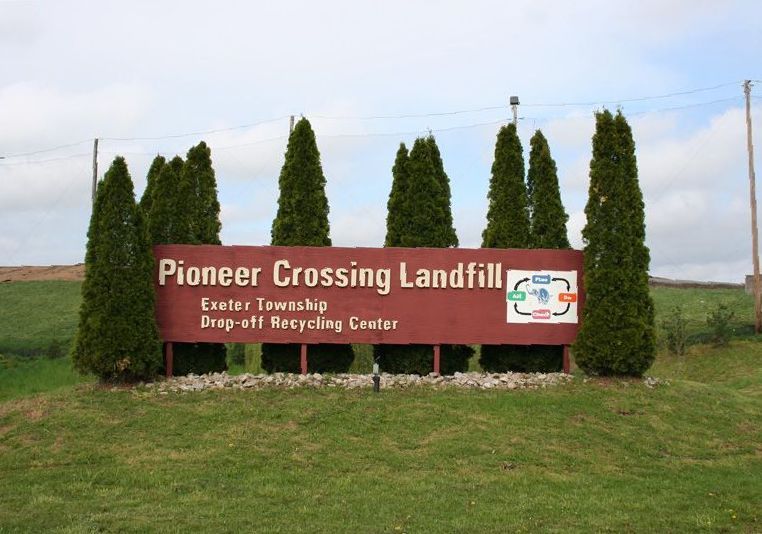Totally Recyclable: Our Experience at Total Recycle
In May of 2023, our crew took a field trip to the Total Recycle
facility in Birdsboro, PA to learn more about the recycling process. We wanted to find out exactly how much of the refuse we put in the bin actually gets recycled, and how much of it ends up in the landfill. We were pleasantly surprised by what we learned on our tour with Jeff, the general manager of the facility.
The tour began with an introductory video of the facility, which was followed by an in-depth explanation of the large and very informative flow chart on the wall of the visitor's center. Jeff was very thorough and made sure to answer all of our questions about the recycling process, and which materials can and cannot be recycled. It was refreshing to hear that a majority of the material this particular facility receives is bundled up and sold in bulk to be reused or repurposed in a variety of ways.
We then got to walk through the warehouse that houses the massive sorting machine.
The machine and some nimble-fingered workers sort out cardboard (yes, even the greasy pizza boxes), hard plastics, glass, aluminum, scrap metal, aseptic cartons, flex plastics, and more. From specialized rotating cylinders to computerized, targeted blasts of air, it's truly incredible the kind of technology this single machine uses to detect and remove over 80 percent of material from the line.
That leftover 20 percent or so is actual garbage that cannot be recycled, like food waste, textiles, tissue paper, batteries, and other materials. New technology is developed every year, so hopefully we will be able to recycle these items in the future.
Jeff made it clear that although Total Recycle is a for-profit company, it is one of the only facilities of its kind that strives to reduce its overall environmental impact (which we love!) and takes great care to extract as much material as possible before sending the remainder to its sister facility, the Pioneer Landfill, for disposal. Pioneer is another facility we recommend visiting, even if briefly. Unfortunately, most recycling facilities in the United States will send material to landfills if it is determined to be too much of a hassle to recycle, or if there's little money to be made from it.
If you aren't sure what your recycling facility does with the materials it receives, visit the company website or contact your local municipality for more information. Better yet, see if your facility offers tours to the public. This is a great way to learn more about the process and the requirements necessary to successfully (and safely) recycle something, and you might be surprised at what they do and don't take.
And finally, we highly recommend taking a tour of Total Recycle and swinging by Pioneer Landfill to experience the facilities first-hand. It will surely inspire you to think twice about the items you throw into the garbage can.
Check out the latest:











